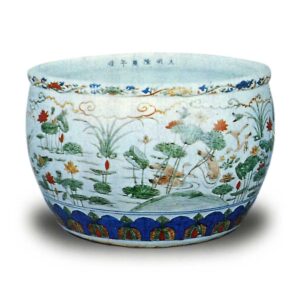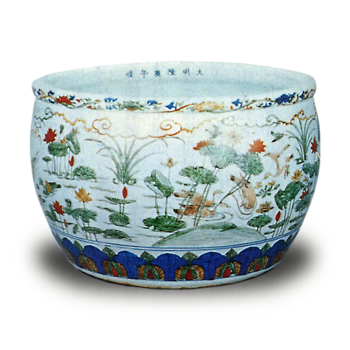
This is the name of an official kiln during the Longqing period (1567-72) of the Ming dynasty in China. It is difficult to see any unique characteristics in the ceramics during this period, which lasted only six years, and it can be understood as a mixture of both Jiajing and Wanli styles. Furthermore, since the Emperor Mu Zong of the time was very thrifty and only in the fifth year of his reign did he allow the pottery to be produced, there are very few artifacts from this period, making it even more difficult to determine the characteristics of these pieces. The blue-and-white and red-painted wares are almost in the same style as those of the Jiajing period, but the patterns are a little more elaborate, indicating a precursor to the Manryaku period.


